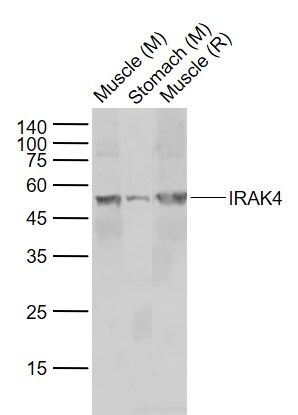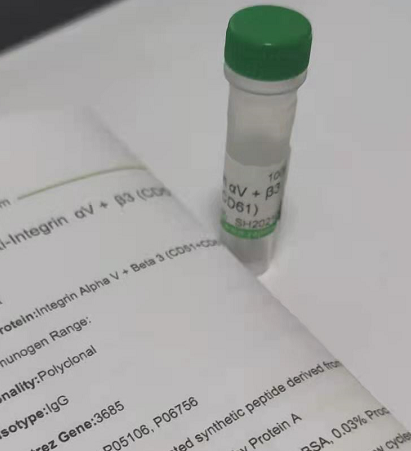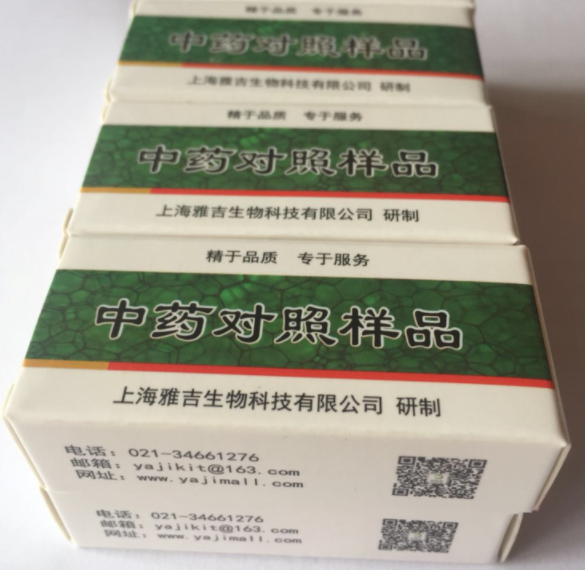| 產(chǎn)品編號(hào) | Ys-2440R |
| 英文名稱 | IRAK4 |
| 中文名稱 | 白介素-1受體相關(guān)激酶4抗體 |
| 別 名 | IL-1 Receptor-associated Kinase 4; 8430405M07Rik; 9330209D03Rik; IPD1; IRAK4; NY-REN-64; REN64; INTERLEUKIN RECEPTOR-ASSOCIATED KINASE 4; Interleukin 1 receptor associated kinase 4 mutant form 1; Interleukin-1 receptor-associated kinase 4; Interleukin1 receptor associated kinase 4; IPD1; IRAK 4; IRAK-4; IRAK4 mutated form 1; IRAK4_HUMAN; LOC 51135; NY REN 64 antigen; Renal carcinoma antigen NY-REN-64. |
| 抗體來源 | Rabbit |
| 克隆類型 | Polyclonal |
| 交叉反應(yīng) | Human, Mouse, Rat, (predicted: Dog, Pig, Cow, Horse, Sheep, ) |
| 產(chǎn)品應(yīng)用 | WB=1:500-2000 ELISA=1:5000-10000 IHC-P=1:100-500 IHC-F=1:100-500 IF=1:100-500 (石蠟切片需做抗原修復(fù)) not yet tested in other applications. optimal dilutions/concentrations should be determined by the end user. |
| 理論分子量 | 51kDa |
| 細(xì)胞定位 | 細(xì)胞漿 |
| 性 狀 | Liquid |
| 濃 度 | 1mg/ml |
| 免 疫 原 | KLH conjugated synthetic peptide derived from human IRAK4: 21-120/460 |
| 亞 型 | IgG |
| 純化方法 | affinity purified by Protein A |
| 緩 沖 液 | 0.01M TBS(pH7.4) with 1% BSA, 0.03% Proclin300 and 50% Glycerol. |
| 保存條件 | Shipped at 4℃. Store at -20 °C for one year. Avoid repeated freeze/thaw cycles. |
| 注意事項(xiàng) | This product as supplied is intended for research use only, not for use in human, therapeutic or diagnostic applications. |
| PubMed | PubMed |
| 產(chǎn)品介紹 | This gene encodes a kinase that activates NF-kappaB in both the Toll-like receptor (TLR) and T-cell receptor (TCR) signaling pathways. The protein is essential for most innate immune responses. Mutations in this gene result in IRAK4 deficiency and recurrent invasive pneumococcal disease. Multiple transcript variants encoding different isoforms have been found for this gene. [provided by RefSeq, Aug 2011] Function: Serine/threonine-protein kinase that plays a critical role in initiating innate immune response against foreign pathogens. Involved in Toll-like receptor (TLR) and IL-1R signaling pathways. Is rapidly recruited by MYD88 to the receptor-signaling complex upon TLR activation to form the Myddosome together with IRAK2. Phosphorylates initially IRAK1, thus stimulating the kinase activity and intensive autophosphorylation of IRAK1. Phosphorylates E3 ubiquitin ligases Pellino proteins (PELI1, PELI2 and PELI3) to promote pellino-mediated polyubiquitination of IRAK1. Then, the ubiquitin-binding domain of IKBKG/NEMO binds to polyubiquitinated IRAK1 bringing together the IRAK1-MAP3K7/TAK1-TRAF6 complex and the NEMO-IKKA-IKKB complex. In turn, MAP3K7/TAK1 activates IKKs (CHUK/IKKA and IKBKB/IKKB) leading to NF-kappa-B nuclear translocation and activation. Alternatively, phosphorylates TIRAP to promote its ubiquitination and subsequent degradation. Phosphorylates NCF1 and regulates NADPH oxidase activation after LPS stimulation suggesting a similar mechanism during microbial infections. Subunit: Associates with MYD88 and IRAK2 to form a ternary complex called the Myddosome. Once phosphorylated, IRAK4 dissociates from the receptor complex and then associates with the TNF receptor-associated factor 6 (TRAF6), IRAK1, and PELI1; this intermediate complex is required for subsequent NF-kappa-B activation. Interacts with IL1RL1. Subcellular Location: Cytoplasm. Post-translational modifications: Phosphorylated. DISEASE: Defects in IRAK4 are the cause of recurrent isolated invasive pneumococcal disease type 1 (IPD1) [MIM:610799]. Recurrent invasive pneumococcal disease (IPD) is defined as two episodes of IPD occurring at least 1 month apart, whether caused by the same or different serotypes or strains. Recurrent IPD occurs in at least 2% of patients in most series, making IPD the most important known risk factor for subsequent IPD. Defects in IRAK4 are the cause of IRAK4 deficiency (IRAK4D) [MIM:607676]. IRAK4 deficiency causes extracellular pyogenic bacterial and fungal infections in otherwise healthy children. Similarity: Belongs to the protein kinase superfamily. TKL Ser/Thr protein kinase family. Pelle subfamily. Contains 1 death domain. Contains 1 protein kinase domain. SWISS: Q9NWZ3 Gene ID: 51135 |
| 產(chǎn)品圖片 |  Sample: Lane 1: Muscle (Mouse) Lysate at 40 ug Lane 2: Stomach (Mouse) Lysate at 40 ug Lane 3: Muscle (Rat) Lysate at 40 ug Primary: Anti-IRAK4 (bs-2440R) at 1/1000 dilution Secondary: IRDye800CW Goat Anti-Rabbit IgG at 1/20000 dilution Predicted band size: 51-55 kD Observed band size: 51 kD  Tissue/cell: human lung carcinoma; 4% Paraformaldehyde-fixed and paraffin-embedded; Antigen retrieval: citrate buffer ( 0.01M, pH 6.0 ), Boiling bathing for 15min; Block endogenous peroxidase by 3% Hydrogen peroxide for 30min; Blocking buffer (normal goat serum,C-0005) at 37℃ for 20 min; Incubation: Anti-IRAK4 Polyclonal Antibody, Unconjugated(bs-2440R) 1:200, overnight at 4°C, followed by conjugation to the secondary antibody(SP-0023) and DAB(C-0010) staining  Tissue/cell: human endometrium carcinoma; 4% Paraformaldehyde-fixed and paraffin-embedded; Antigen retrieval: citrate buffer ( 0.01M, pH 6.0 ), Boiling bathing for 15min; Block endogenous peroxidase by 3% Hydrogen peroxide for 30min; Blocking buffer (normal goat serum,C-0005) at 37℃ for 20 min; Incubation: Anti-IRAK4 Polyclonal Antibody, Unconjugated(bs-2440R) 1:200, overnight at 4°C, followed by conjugation to the secondary antibody(SP-0023) and DAB(C-0010) staining  Blank control:Molt-4. Primary Antibody (green line): Rabbit Anti-IRAK4 antibody (bs-2440R) Dilution: 0.2μg /10^6 cells; Isotype Control Antibody (orange line): Rabbit IgG . Secondary Antibody : Goat anti-rabbit IgG-PE Dilution: 0.2μg /test. Protocol The cells were fixed with 4% PFA (10min at room temperature)and then permeabilized with 20% PBST for 20 min at-20℃. The cells were then incubated in 5%BSA to block non-specific protein-protein interactions for 30 min at at room temperature .Cells stained with Primary Antibody for 30 min at room temperature. The secondary antibody used for 40 min at room temperature. Acquisition of 20,000 events was performed. |
我要詢價(jià)
*聯(lián)系方式:
(可以是QQ、MSN、電子郵箱、電話等,您的聯(lián)系方式不會(huì)被公開)
*內(nèi)容:









